When it comes to smoking brisket, a common practice among pitmasters is wrapping the meat during the cooking process. This technique is employed to retain moisture, manage the cooking temperature, and prevent the stall—a period during smoking when the internal temperature of the brisket plateaus.
Traditionally, many have preferred butcher paper for this task, but a question we often encounter is whether parchment paper can be used as a substitute.

We find that using parchment paper to wrap brisket is indeed a viable option. Parchment paper is heat-resistant and non-stick, which can be advantageous in the smoking process. It allows for some steam release, helping to keep the brisket from becoming too moist or soggy.
On the other hand, butcher paper is more breathable and contributes to the development of a firmer bark on the brisket, a characteristic cherished by BBQ enthusiasts.
Our experience suggests that while both options are suitable for smoking brisket, they may yield slightly different results in terms of texture and moisture retention.
Therefore, we must consider the desired end-product when deciding whether to use parchment or butcher paper for wrapping the brisket.
Understanding the properties and outcomes associated with each type of paper ensures that we make an informed choice that aligns with our smoking preferences and the culinary experience we aim to create.
Jump to:
Understanding Brisket and the Smoking Process
When we smoke a brisket, wrapping it becomes a critical step in the process, affecting both the meat's moisture content and the formation of the bark.
Butcher paper and parchment paper serve specific purposes during smoking that can influence the flavor and texture of the final product.
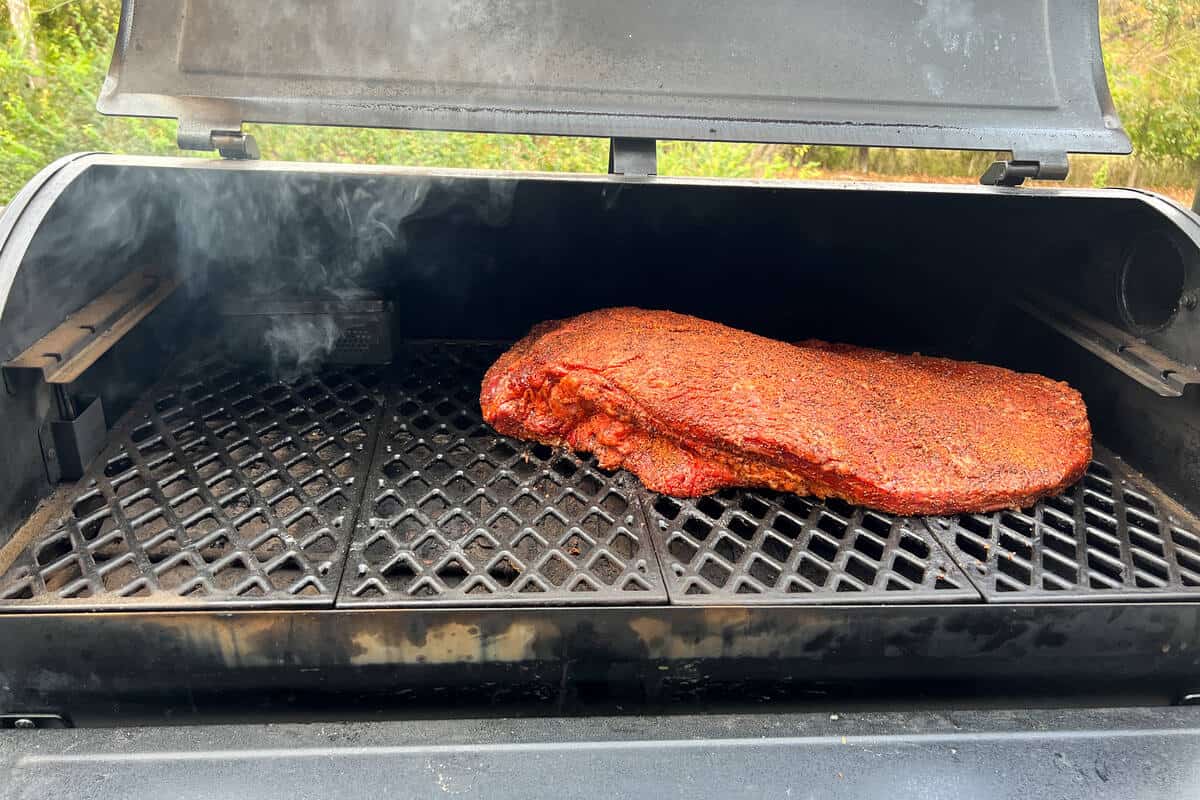
The Role of Butcher and Parchment Paper
Butcher paper has been a traditional choice for wrapping brisket. Its breathable nature allows smoke to penetrate and contribute to the formation of a robust bark, while still preserving the meat's moisture.
Parchment paper, on the other hand, retains moisture and can be used to wrap brisket during smoking. It's less breathable, which means it traps more steam and can soften the bark compared to butcher paper.
Both types of paper aim to address the stall—a phase when the internal temperature of the brisket plateaus, slowing down the cooking process.
Wrapping Techniques and Timing
Timing is crucial when we decide to wrap a brisket. Typically, the meat is wrapped when it reaches an internal temperature of about 165°F.
This technique, often referred to as the Texas Crutch, helps to push through the stall and can reduce the overall cooking time.
Whether we choose to wrap the brisket in aluminum foil, butcher paper, or parchment paper, the goal is to seal in some of the meat's natural juices to prevent it from drying out during the latter stages of the smoking process.
However, the choice of wrapping material can have a significant impact on the final product, especially regarding the crispness of the bark and the depth of the smoky flavor.
Advantages of Wrapping Brisket
We understand that wrapping a brisket during the smoking process can significantly enhance moisture retention and flavor, leading to a more succulent final product.
Moisture Retention and the Stall
Wrapping brisket, often referred to as the Texas crutch method, is crucial for maintaining moisture.
During cooking, the "stall" occurs when the internal temperature of the brisket plateaus.
This is due to evaporation, which has a cooling effect. By wrapping the brisket, we trap steam and heat, which pushes through the stall and speeds up cooking.
This method has proven effective in ensuring juicier meat with less risk of drying out.
Foods Guy and Traeger Grills both underscore these benefits.
Texture and Flavor Considerations
The decision to wrap a brisket also impacts its texture and flavor.
Wrapping it in materials like parchment paper can aid in creating a tender texture, since the brisket bastes in its juices while the bark forms a protective crust outside.
Moreover, it ensures that delicate balance between a moist interior and the coveted flavor-rich bark.
While some critics argue that parchment may not preserve moisture as well as butcher paper, it still allows for some steam release, which prevents sogginess.
For detailed comparisons, Bearded Butchers provide insight into different wrapping materials and their effects on brisket.
Comparing Wrapping Materials
When we decide to wrap a brisket during the smoking process, the materials we select can influence the outcome in terms of moisture, flavor, and cooking time.
Butcher Paper Characteristics
Butcher paper, particularly pink butcher paper, is a popular choice for wrapping brisket as it's breathable and allows some level of smoke penetration, enhancing the smoky flavor of the meat.
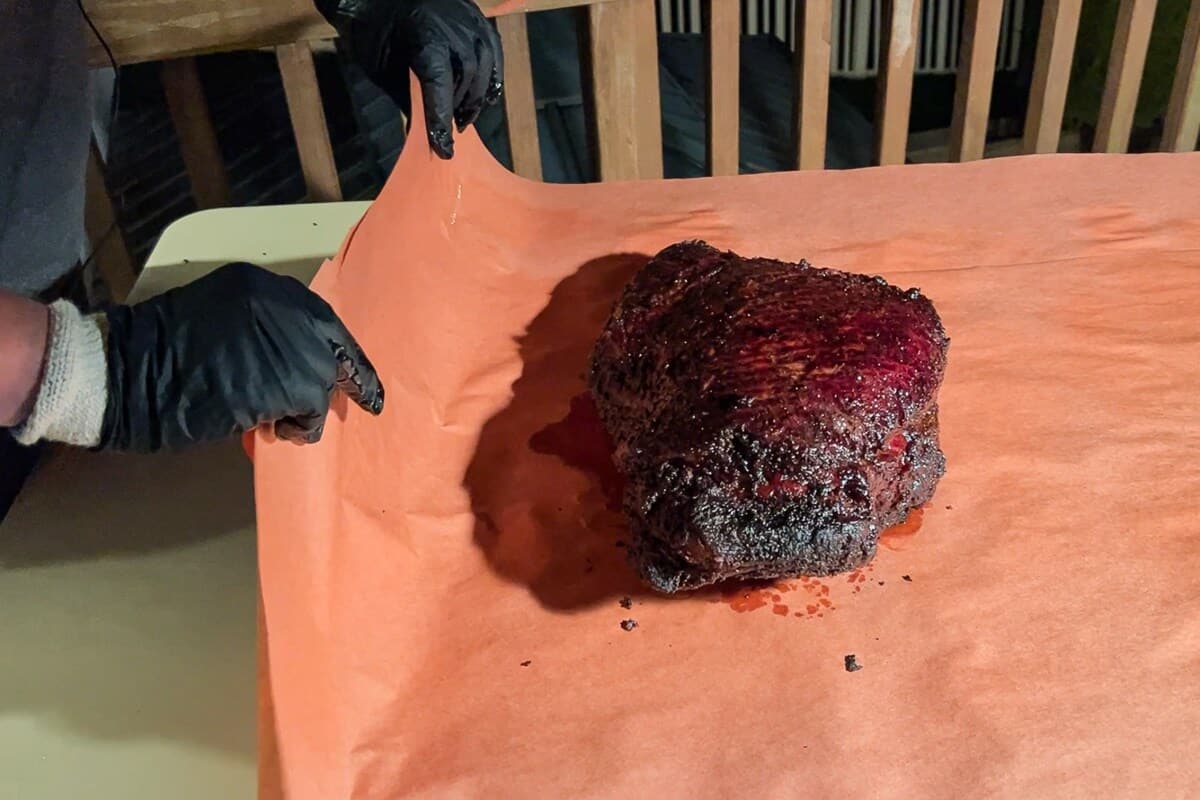
This type of paper, which can also be referred to as peach paper or kraft paper, is designed to be heat-resistant and durable, making it a preferred option for many pitmasters.
The porosity of butcher paper helps to protect the brisket from the harsh heat of the smoker while still allowing airflow that prevents the meat from becoming too steamy or soggy, creating a balance that results in a tender and flavorful crust or 'bark'.
Parchment Paper Use in Smoking
Parchment paper, on the other hand, is coated with a non-stick surface, making it ideal for cooking situations that require a clean release. When smoking brisket, it acts as an effective barrier that guards the meat from direct heat and contains the meat's natural juices, aiding in moisture retention.
Because it's less permeable than butcher paper, parchment paper doesn't allow the same level of moisture to escape from the bark, which can result in a softer texture.
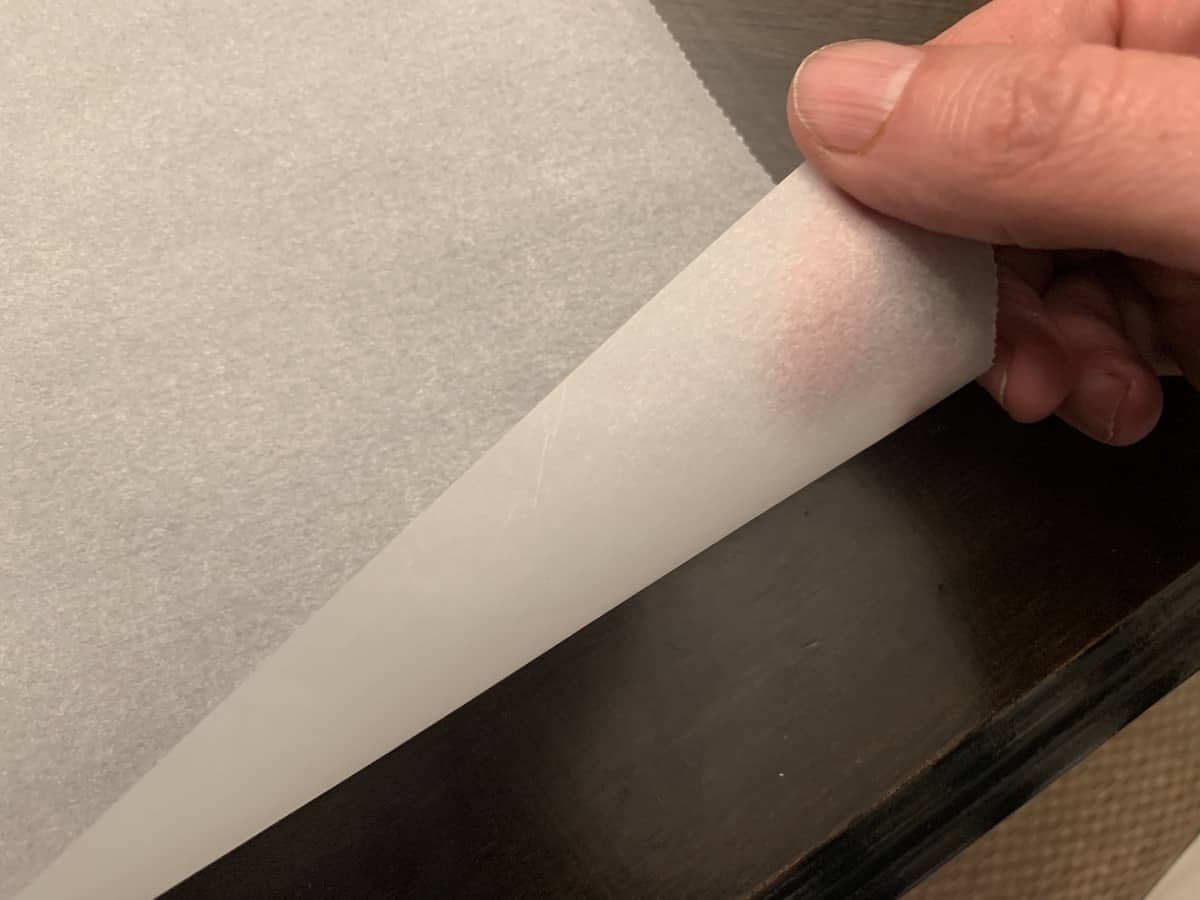
However, we've found that the inability to wrap a brisket parchment paper as tightly as you can with aluminum foil, still results in a better bark due to the air gaps that form naturally around the edges and corners.
Parchment paper's non-stick and heat-resistant qualities are useful, and the paper can be a decent substitute if butcher paper or aluminum foil are not available, offering a compromise between creating a moist environment and supporting browning and texturizing of the brisket exterior.
How to Wrap Brisket Properly
Preparation: Before we initiate the wrapping process, let's confirm that our brisket has reached the ideal internal temperature of around 160-170°F. This temperature is crucial because it's the point when the brisket will benefit most from being wrapped.
We alos want to ensure th bark has completely formed, is a nice dark color, and the fat cap gives like soft butter when we press compared to feeling like bouncy rubber.
Materials Needed:
- Parchment paper
- Butcher's twine (if required)
- Align the Parchment Paper: Lay out two wide sheets of parchment paper, each longer than the brisket to ensure adequate coverage. We recommend overlapping them slightly to create a broad wrapping surface.
- Place the Brisket: Set the brisket in the center of the paper with the fat side up. This orientation helps to keep the meat moist as the fat renders down.
- Wrap Tightly: Carefully fold the edges of the parchment paper over the brisket. The goal here is to wrap it as snugly as possible to maintain the meat's moisture without allowing too much steam to escape.
Securing the Package: If necessary, we can use butcher's twine to tie the parchment package, ensuring the brisket stays well-wrapped throughout the remainder of the cooking process.
Once prepped and secured, we return the brisket to the smoker or oven. It's vital to monitor smoker temperature to maintain consistency — ideally between 225-275°F. Proper wrapping aids in temperature control, which affects both the cooking time and the quality of the final product.
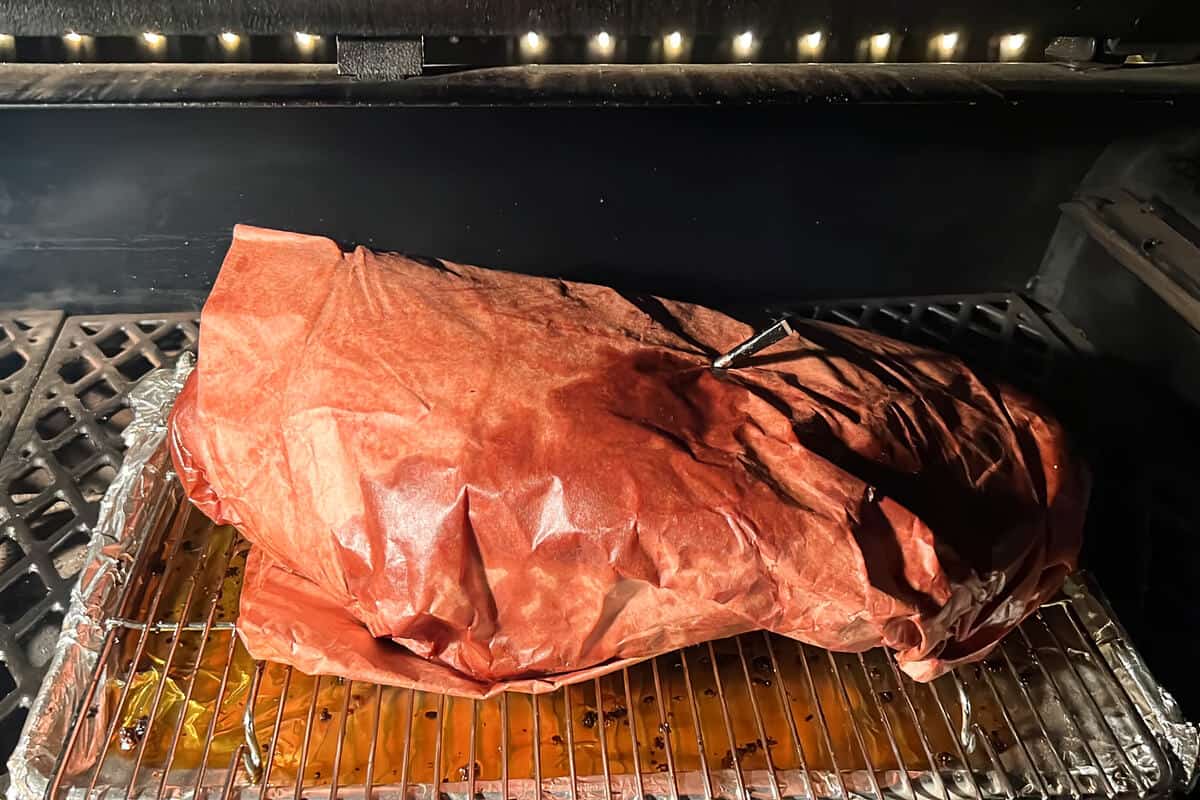
By wrapping our brisket at the right time and in the right manner, we effectively trap the moisture and accelerate the cooking time, while maintaining the bark we've worked to form.
This step is a balancing act — we want to preserve the brisket's moisture while also achieving a perfect bark.
Frequently Asked Questions
In this section, we address common queries smokers have when choosing their wrapping materials for brisket, exploring the benefits and differences to aim for the perfect smoked brisket.
What are the benefits of wrapping brisket in butcher paper during smoking?
Wrapping brisket in butcher paper during smoking allows the meat to breathe, helping to develop a desirable bark. It also maintains the brisket's moisture without making the bark too soggy.
Is there a difference in the final product when using parchment paper compared to butcher paper for smoking meats?
Yes, using parchment paper may result in a softer bark than butcher paper. Parchment paper lets more steam escape than aluminum foil, which is good for bark formation.
Can foil be used as an alternative to butcher paper for smoking brisket, and if so, what are the pros and cons?
Foil is a viable alternative to butcher paper for smoking brisket, with the benefit of reflecting heat and speeding up cooking time. However, it traps more steam, which can soften the bark and affect the texture.
What specific type of butcher paper is recommended for smoking brisket for optimal results?
Unwaxed, uncoated, food-grade butcher paper is recommended for smoking brisket as it's breathable and withstands high temperatures without disintegrating or sticking to the meat.
How does parchment paper perform under high heat conditions like those in a smoker?
Parchment paper is designed to withstand high temperatures, but it is not as permeable as butcher paper, which may limit the development of the brisket's bark during smoking.
Where can one typically find butcher paper suitable for smoking meats?
Butcher paper suitable for smoking can be found at specialty kitchen supply stores, online retailers, and sometimes at local butchers or restaurant supply stores.

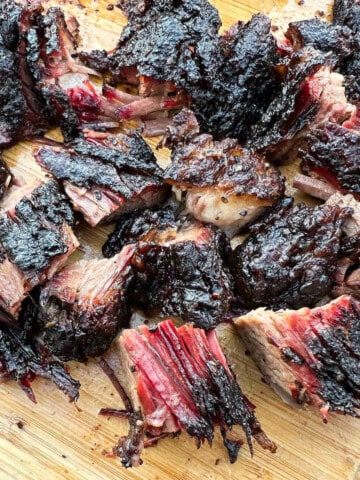
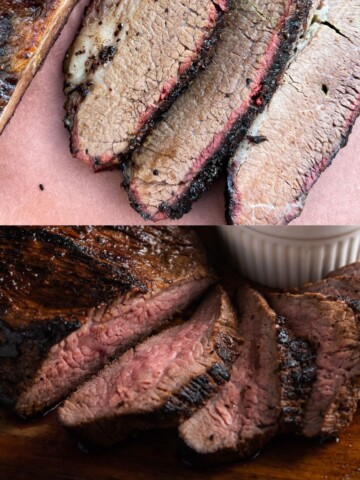
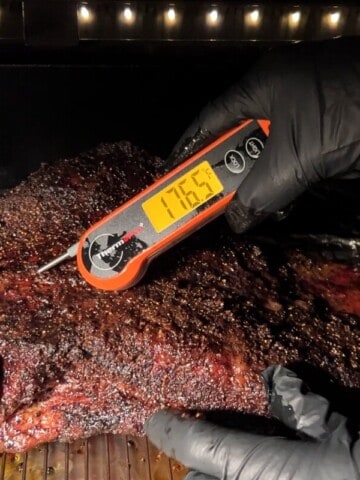

Leave a Reply